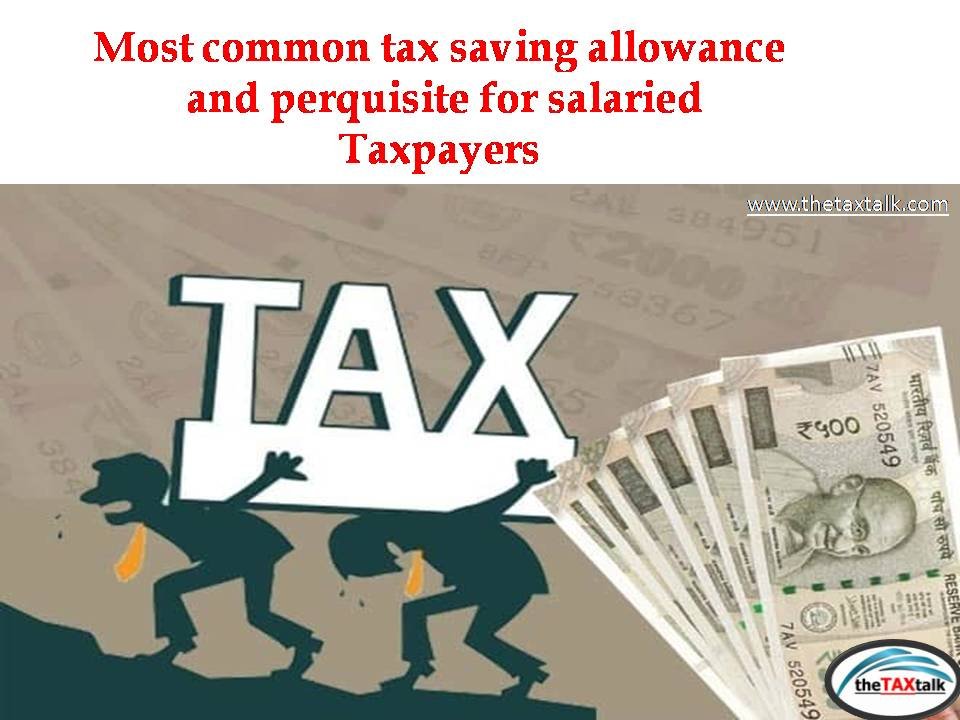![]()
Most common tax saving allowance and perquisite for salaried Taxpayers
For salaried taxpayers, the option of tax planning or reducing the tax liability is already very less. However, while calculating salary income under the Income Tax Act, 1961 various allowances and perquisites can surely be considered.
Here are some of the most common allowances and perquisites to check:
1. House Rent Allowance (HRA): Exempt to the extent it satisfies the conditions prescribed under Section 10(13A).
2. Leave Travel Allowance (LTA): Exempt for actual travel expenses within India subject to specific conditions under Section 10(5).
3. Transport Allowance: Exempt up to Rs. 1,600 per month (Rs. 3,200 per month for physically disabled employees) under Section 10(14).
4. Children Education Allowance (CEA): Exempt up to Rs. 100 per month per child (up to a maximum of 2 children) under Section 10(14).
5. Hostel Expenditure Allowance (HEA): Exempt up to Rs. 300 per month per child (up to a maximum of 2 children) under Section 10(14).
6. Medical Reimbursement: Exempt up to Rs. 15,000 per annum for medical expenses incurred for self and family members under Section 17(2)(v).
7. Food Coupons or Meal Vouchers: Exempt up to Rs. 50 per meal under Section 10(14).
8. Mobile Phone/Internet Reimbursement: Exempt to the extent of actual expenses incurred for official purposes under Section 10(14).
9. Gift Vouchers: Exempt up to Rs. 5,000 per annum under Section 10(14).
10. Employer’s Contribution to Provident Fund: Exempt up to 12% of salary under Section 10(14).
11. Gratuity: Exempt up to a certain limit based on service years under Section 10(10).
12. Pension: Commuted pension is exempt, and an uncommuted pension is taxable as salary income.
13. Perquisites: Taxable value of various perquisites provided by the employer as per the prescribed rules. It’s important to note that these exemptions and allowances have specific conditions, limits, and eligibility criteria.
Salaried taxpayers may plan keeping the above in mind and manage the tax impact accordingly.


